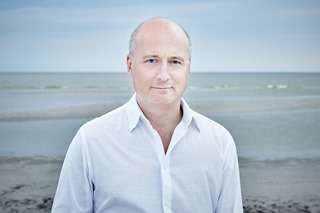|
Back
The North Remembers New York
David Geffen Hall, Lincoln Center
10/14/2017 -
Edvard Grieg: Andante con moto
Dmitri Shostakovich: Piano Trio No. 2 in E minor, Op. 67
Jean Sibelius: Symphony No. 5 in E-flat major, Op. 82
Frank Huang (violin), Carter Brey (cello), Leif Ove Andsnes (piano)
New York Philharmonic, Paavo Järvi (conductor)

P. Järvi (© Kaupo Kikkas)
“I’m so glad I live in a world where there are Octobers. It would be terrible if we just skipped from September to November, wouldn’t it? Look at these maple branches. Don’t they give you a thrill–several thrills? I’m going to decorate my room with them.”
Lucy Maud Montgomery, Anne of Green Gables
Although I have covered orchestras all over the world, the New York Philharmonic is the only one of which I am aware that schedules a series of events each season wherein a chamber work shares the stage with a full orchestral composition. The experience is akin to attending two concerts in the same day, with a movable back wall the essential prop in this noble acoustical experiment. Add the expertise of the Estonian Paavo Järvi and a good (and instructive) time should be had by all.
Abby Huntsman said on her television show last week that her mother “hates the cold weather”. This may be problematic as her father has recently been appointed the US ambassador to Russia. One hears that bone chilling phenomenon in much of the music of Dmitri Shostakovich and, in the music of the war years, an icy intensity as well. Although there is a spirit of humor in the Piano Trio in E minor, it is a dark humor indeed.
Great (or perhaps mediocre) minds agree. I was preparing to tell the story of Shostakovich at the summer musical retreat of Komarovo in 1944, but discovered that this very incident was also delineated in today’s program booklet. Ah well, but it is instructive, so here goes: the composer was approached by a chamber group that wished to perform his new trio, but found its tempi impossible to maintain. Shostakovich replied that he favored an old and decrepit personal metronome, so please employ whatever tempo seemed right for them! This current interpretation was more than adequate, although I must nit-pick a couple of items. First, the cello presented his opening solo so softly as to be virtually inaudible and the Allegro con brio was a bit short on brio. My personal jury is still out on violinist Frank Huang – it may simply be that, for a concertmaster, he does not appear to project any particular style or personality. On the plus side, the trio really dug in to the Jewish theme in the final movement. The Shostakovich was preceded by a lovely interpretation of the Grieg, recreating for me that unique sound so delicately captured in the old recordings of Kirsten Flagstad presenting this unjustly neglected composer’s songs.
Sibelius was synaesthetic and could see colors as he listened to sounds. This unusual quality comes to life in his compositions and in none more affectingly than in his Symphony No. 5. Unquestionably, performances from Finland and its surroundings tend to capture this rare quality much more securely than those originating elsewhere. One listen at YouTube tells the tale. Experience the Lahti Orchestra performance led by Jukka-Pekka Saraste and then try the London Symphony under Leonard Bernstein. The net result is positively different music, the Finnish group on the mark, the British forced and somewhat supercilious (part of this the innate shortcomings and egotism of Bernstein). Could a neighbor from Tallinn fill the bill?
If the first half of this program featured a smallish sound, the second thrilled with a huge one. It seemed like there were 200 people on that stage as Maestro Järvi unleashed torrents of statements and extremely colorful answers. One creative devise fitted especially well to this ensemble. The Phil has their violas out in front stage left and the main theme in the second movement begins its life on earth as a spectrally beautiful pizzicato in that section. Another orchestra of equal quality but antiphonal positioning would not have been able to project this theme’s journey as well as this one.
Once I heard Wolfgang Sawallisch conduct the Philadelphia Orchestra in the Sibelius 7th. The piece concluded and no one applauded. After a brief silence, maestro turned around and said “That’s all there is!” and then there was the obligatory audience noise. This present afternoon there was no possibility of this type of icy response as Järvi built this concluding section expertly. As the sound began to morph into the final chords interspersed with dramatic silences, I thought that I really should shout “Bravo!” at the conclusion, but can’t, you know, as I am a critic and must keep mum. However, some other man in the audience screamed it for me at this dramatic rendition’s conclusion. I will be eternally grateful.
I miss Paavo Järvi since he left Cincinnati and became a globetrotter. We used to hear him often in New York. Now we can be thankful for these occasional inspiring visits. Undoubtedly this is no particular oddity to maestro, but his father, Neeme Järvi (he’s an Estonian too), is conducting Sibelius and Rubinstein here at Lincoln Center tomorrow.
Fred Kirshnit
|